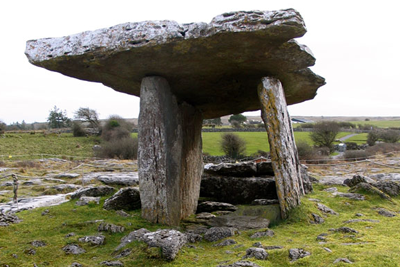Ireland’s Dolmens – A Guide to Portal Tombs and Prehistoric Mystery
🗿 Introduction
Dolmens — also called portal tombs — are some of the most iconic prehistoric monuments in Ireland. These massive stone table-like structures were built between 4000–3000 BC, typically as burial chambers. Their dramatic appearance and remote settings make them favorites among photographers and folklore lovers alike.
🔎 Step-by-Step: How to Find and Visit Dolmens
- Search for Portal Tombs on heritage maps or apps.
- Use GPS Coordinates — many are unsigned or on farmland.
- Prepare for a Hike — some dolmens require walking trails.
- Look for Aligned Capstones — their tilt may reflect cosmology.
⚠️ Common Challenges
- Overgrowth or poor signage
- Difficult terrain or boggy land
- Confusion with boulder burials or collapsed tombs
🧙 Myth vs. Fact
- Myth: Giants built the dolmens overnight.
- Fact: Stones weigh up to 100 tonnes and were likely moved by hundreds of workers.
- Legend: Diarmuid and Gráinne’s Bed (a popular dolmen name) stems from tragic romance mythology.
🗝️ Key Dolmen Sites in Ireland
🧺 Poulnabrone Dolmen, Co. Clare
Ireland’s most photographed dolmen, located in the limestone Burren and dating to ~3800 BC.
🛏️ Browne’s Hill Dolmen, Co. Carlow
Features the largest capstone in Europe at over 100 tonnes.
🌾 Proleek Dolmen, Co. Louth
Beautifully framed by trees, located near a hotel and believed to grant wishes if a stone lands on top.
📸 Suggested Visuals
- Capstone balancing tricks
- Side-view silhouette at sunset
- Nearby boulder burials or standing stones
📣 Explore Ireland’s Oldest Burial Chambers
Uncover the myths, magic, and engineering of dolmens on your next heritage adventure.
🔗 [Explore the Monuments Menu]

